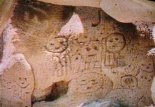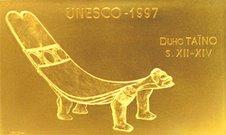In a recent press release the Obama Administration recognized that the UNDRIP provides a framework for addressing indigenous issues. During President Obama's first year in office, tribal leaders and interested non-governmental organizations (NGOs) encouraged the United States to reexamine its position on the Declaration.
Roberto Mukaro Agueibana Borrero, a representative of the United Confederation of Taíno People welcomed the news.
“This decision is important not only for Indigenous Peoples living in the mainland United States but for other Indigenous Peoples like the Taíno who reside in non-self-governing territories controlled by the U.S. Government” stated Borrero.
He continued noting that “unlike mainland American Indians, Alaska Natives, and Native Hawaiians, the Taíno of Borikén (Puerto Rico) for example do not benefit from U.S. Federal laws designed to protect indigenous cultural and spiritual properties.”
The United Confederation of Taíno People promoted and organized Caribbean regional support toward the Declaration’s final adoption in 2007.
“Legal application of this Declaration does not require a States’ formal recogntition of Indigenous Peoples and the UCTP is committed to engaging the U.S. government on this issue with our future generations in mind” said Borrero.
As part of the U.S. government’s review process, the U.S. Department of State, together with other Federal agencies, will be hosting consultations with federally-recognized tribes and dialogues with interested NGOs and other stakeholders.
UCTPTN 06.08.2010













